The global game of corporate growth can be like a game of Pac-Man. Just when you think you’ve tunneled to safety and clear skies ahead, a legacy ghost you thought was too slow-moving can gobble you up. Conversely, once you’ve seized a kernel of power, you might be able to gobble them.

Gobbling and chewing are part and parcel of the Chicago economy, from its legacy stockyards to companies such as Mars (which opened its first Chicago facility in 1929) and the Wrigley Company, which was acquired by Mars in 2008. In doing so, it digested one more flavor of Chicago ingenuity. Now it’s busy cooking up one more recipe of Chicago innovation.
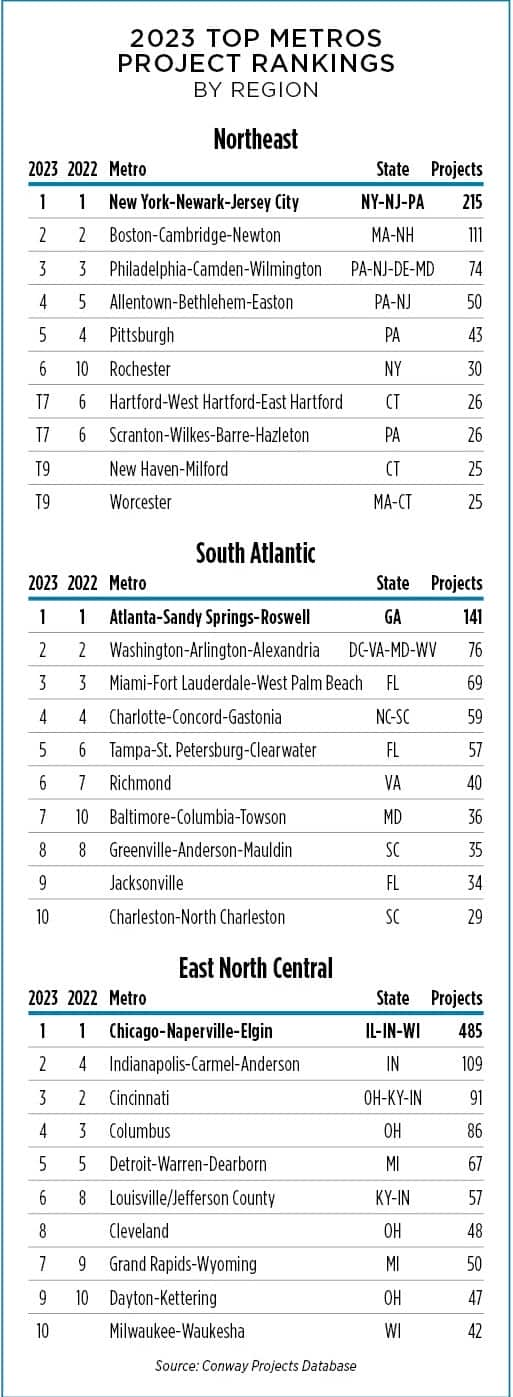 Mars in January opened one of seven global R&D hubs on its Goose Island campus in Chicago, around 18 months after it broke ground. This is no little lab. The 44,000-sq.-ft., $42 million facility dedicated to chocolate and nut testing, research and innovation will host 300 R&D associates, said the company, as Mars looks to double its snacking business over the next decade.
Mars in January opened one of seven global R&D hubs on its Goose Island campus in Chicago, around 18 months after it broke ground. This is no little lab. The 44,000-sq.-ft., $42 million facility dedicated to chocolate and nut testing, research and innovation will host 300 R&D associates, said the company, as Mars looks to double its snacking business over the next decade.
The hub joins the company’s existing global innovation sites in Chicago; Guangzhou, China; Huariou, China; Elizabethtown, Pennsylvania; and Slough, United Kingdom. “Innovation has been at the heart of our success for over 100 years, and this significant investment reaffirms our unwavering commitment to staying ahead of the curve,” said Mars Snacking Global President Andrew Clarke. “With an assembly of trailblazing associates, pioneering partnerships that ignite our creativity and unparalleled technology at our fingertips, we will continue to push boundaries in our relentless pursuit of delivering extraordinary experiences for our consumers around the world.”
“In a region already renowned as the epicenter of food-related production and innovation, the arrival of the Mars Research & Development Hub propels Chicagoland to even greater heights,” said Michael Fassnacht, president and CEO of World Business Chicago. “We commend Mars for its unwavering commitment to our city and region, and we are eagerly poised to witness the profound impact this expansion will have, cementing Chicagoland’s undisputed global standing as the ultimate crucible of food innovation.”
Projects from fellow food & beverage companies and the packaging and service providers featured prominently among the 485 corporate facility location and expansion investments tracked by Site Selection in Chicagoland in 2023, vaulting the region to victory for the 11th year in a row in our annual Top Metros ranking of Tier 1 metro areas with more than 1 million residents. There are 56 such metros of that size across the nation.
Chicago’s food & beverage lineup of investors included General Mills in Geneva, Molson Coors at its HQ in Chicago proper, North Star Pickle in Lake Zurich, Huhtamaki in Hammond, Indiana (part of the Chicago region) and the headquarters of Primary Products Ingredients Americas in Schaumburg, among dozens of others.
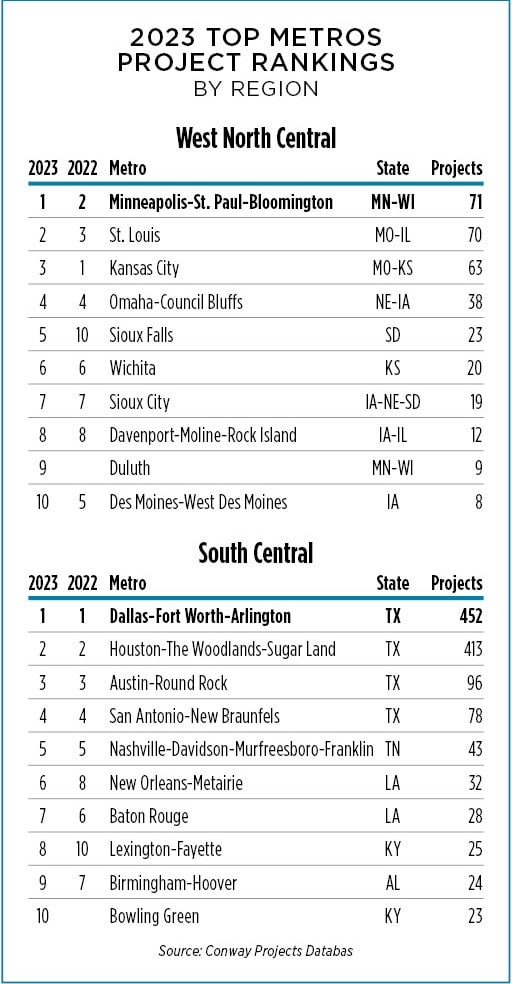 Ferrero is investing in its own innovation lab and North American R&D center in the Marshall Field and Company building downtown, known for decades as the place to find melt-in-your-mouth Frango mints. Now it will welcome over 150 employees working on Keebler, Famous Amos, Mother’s, Fannie May and other brands in the Ferrero portfolio. The company already manufactures Butterfinger and Baby Ruth products at its plant in Franklin Park, and Keebler products on 110th Street in Chicago. The Ferrero manufacturing campus in Bloomington manufactures CRUNCH, 100 Grand and other products, and will soon include a new chocolate processing facility and a new Kinder Bueno production facility.
Ferrero is investing in its own innovation lab and North American R&D center in the Marshall Field and Company building downtown, known for decades as the place to find melt-in-your-mouth Frango mints. Now it will welcome over 150 employees working on Keebler, Famous Amos, Mother’s, Fannie May and other brands in the Ferrero portfolio. The company already manufactures Butterfinger and Baby Ruth products at its plant in Franklin Park, and Keebler products on 110th Street in Chicago. The Ferrero manufacturing campus in Bloomington manufactures CRUNCH, 100 Grand and other products, and will soon include a new chocolate processing facility and a new Kinder Bueno production facility.
Like Mars, Ferrero knows where to satisfy its appetite for acquisitions: It acquired Chicago-based Ferrara Candy in 2017 and famous Chicago chocolatier Fannie May in 2018.
Power Players
Chicagoland claims a narrow win over No. 2 Dallas-Fort Worth-Arlington, Texas, which tallied 452 projects, edging out fellow Texas metro Houston-The Woodlands-Sugar Land, which had 413 projects. From there it’s a significant drop-off in project totals to the 215 tallied by metro New York and 141 in metro Atlanta. The Top 10 finish out with Phoenix, Boston, Indianapolis and Austin — Phoenix and Indy jumping into that elite group from outside the Top 10 last year.
I asked Andrew Van Leuven, an assistant professor of Community and Rural Development at Oklahoma State University who closely studies CBSAs and their changes in categories, why he thought the two newcomers here — as well as Reno, Nevada, which tied for No. 4 in our Tier-2 Metros — had made the jump into the Top 10.
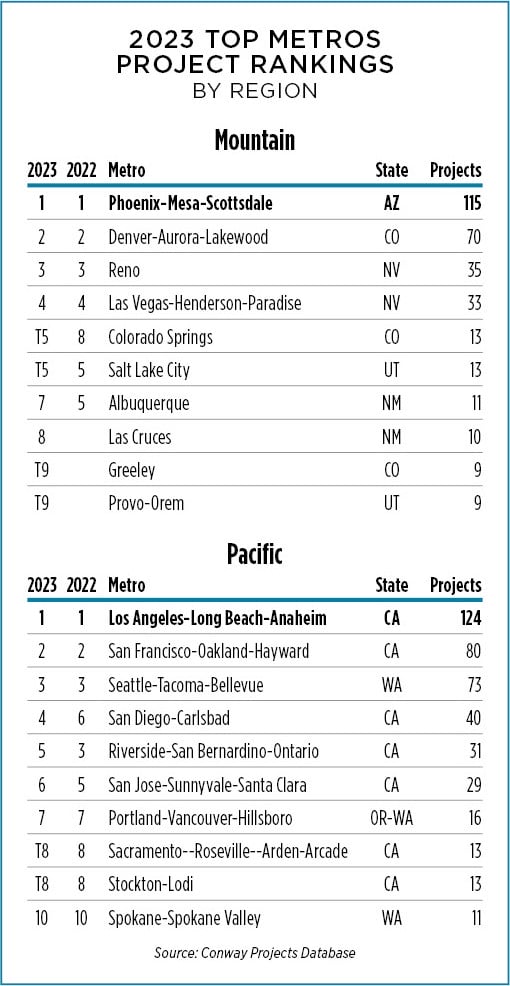
He said he didn’t know specifics “but I sure see a common thread between them!” Not seeing that thread and feeling inadequate, I coaxed it out of him.
“Phoenix and Indy are capital cities, and Reno is 30 minutes away from Carson City,” he said. “Could it be that the proximity to the statehouse is a factor in economic development deals? Also, they’re all along major east-west Interstate routes (I-10, I-70, and I-80). Finally, none of the three metros are particularly historic … Indy took off after the Civil War, and the two others developed largely around the automobile. They’re not places with heavy building restrictions or archaic regulations around development.”
Some of our repeat metro leaders, of course, can also boast a similar abundance of transportation corridors, proximity to political power and regulations and programs streamlined to speed up permitting and encourage development. They also boast strong networks such as the Greater Chicagoland Economic Partnership (GCEP). In Site Selection’s inaugural “America’s Best Counties” rankings last summer, four GCEP counties were among the Top 20. Cook County was No. 2 with 231 projects, DuPage County was No. 9 with 91 projects. Kane and Will counties ranked 14th and 16th spots with 52 and 48 projects, respectively. It also doesn’t hurt that the city, Cook County and the suburbs host a total of 894 tax-increment financing districts.
“One-third of growth capital investments in the first quarter of 2023 went to startups located in the suburbs,” says Andrew Hayes, vice president and director of marketing and communications for World Business Chicago, a sign of the spread of Chicago’s legendarily robust entrepreneurial ecosystem. “Our critical status as an industrial market and international trade hub for the Midwest is reinforced by historic low vacancies, growing rents and strong leasing demand,” he says, “driven by our competitive advantages, including excellent transportation infrastructure.”
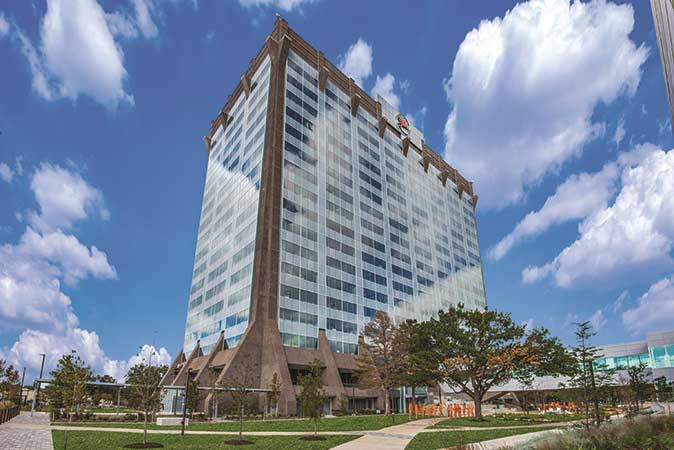
Renderings courtesy of Pegasus Park, Children’s Health and UT Southwestern Medical Center
In a recent report called “The Bright Side of Office,” Cushman & Wakefield noted, “Chicago’s diverse labor pool, central location, infrastructure and quality of life combine to make the city an economic powerhouse. Chicago is a top destination for recent Midwest college graduates, regularly contributing to the 44.3% of the city’s population having a bachelor’s degree or higher.” Moreover, not only does that young talent tend to reside near the city’s core, thus encouraging infill development of retail and multifamily, but Chicago was live-work-play by instinct, before it became a thing. “These attributes combined with a relatively low cost of living when compared to other major markets makes Chicago a prime candidate for both residential and business growth,” Cushman & Wakefield stated.
The Per-Capita Leaders
Thinking internationally — or at the very least, regionally — lies at the heart of project attraction success across many of this year’s Top Metros and Top Metros Per Capita, a category topped by Greater Dallas-Fort Worth, recently named the No. 8 best-performing large city in the nation in Milken Institute’s 2024 rankings. DFW was followed by Houston, Indianapolis, Chicago, Grand Rapids and Louisville. Austin — No. 1 just last year and No. 1 this year in Milken’s rankings — is No. 7, followed by the Cincinnati region, Greater Columbus and Richmond, Virginia.
Known as home to 24 Fortune 500 HQs and 42 in the Fortune 1000, Dallas is making a name in biosciences. In September, seven months after the Dallas Regional Chamber unveiled a new campaign to attract more biotech and life sciences companies, its efforts received a vote of confidence from the federal government in the form of the Advanced Research Projects Agency for Health (ARPA-H), which announced in September that the city’s Pegasus Park will serve as the physical site for one of ARPA-H’s three headquarters. The Dallas hub will focus on customer experience, access and diversifying clinical trials for ARPA-H projects.
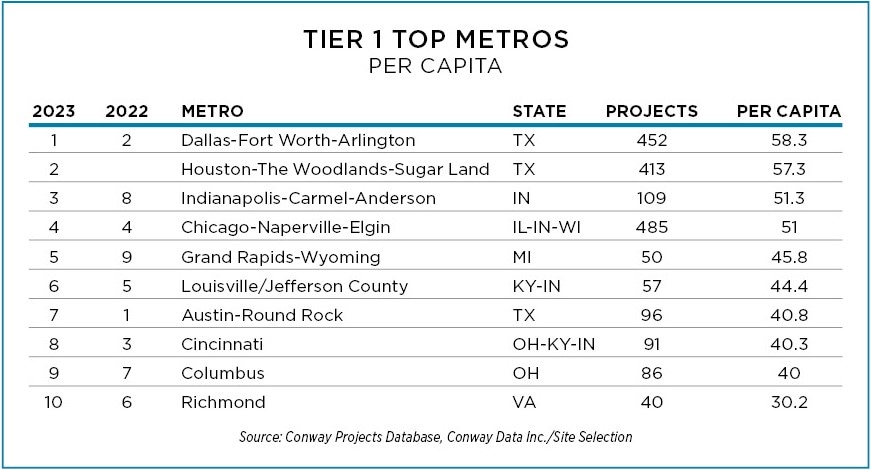
“The news of ARPA-H’s Customer Experience Hub coming to Dallas confirms what the Dallas Regional Chamber has known and worked toward for some time now — the Dallas Region is becoming a powerhouse for life sciences and biotechnology innovation,” said Dale Petroskey, president and CEO of the Dallas Regional Chamber. The news was followed by the more recent announcement of a $5 billion pediatric campus from Children’s HealthTM and UT Southwestern Medical Center in the city’s Southwestern Medical District.

Photo courtesy of Tangram Interiors
Greater Houston is the only one in the Top 10 to have not appeared there last year. The Greater Houston Partnership identified a total of 415 new business announcements in 2023, reflecting a 109% increase over the 199 identified in 2022. “A total of 161 businesses established new facilities in the Houston area (an increase of 53% from 2022) while 252 projects were an expansion of existing Houston-area operations (a 18% increase from 2022),” the Partnership reported.
Among the projects is the November 2023 relocation of “e-commerce unicorn” Cartcom’s global corporate HQ to Houston, “returning to its roots after a brief stint in Austin,” the Partnership said of the company’s decampment in 2021 and subsequent return. “The relocation to Houston will facilitate improved connectivity among the company’s seven corporate offices, including international offices in Poland and Mexico, and 14 distribution centers nationwide,” the company said. “The move will also unlock a deeper talent pool as the company augments key back-office functions including accounting, finance, HR and legal in one of the top cities nationally for Fortune 500 companies and talent.”

